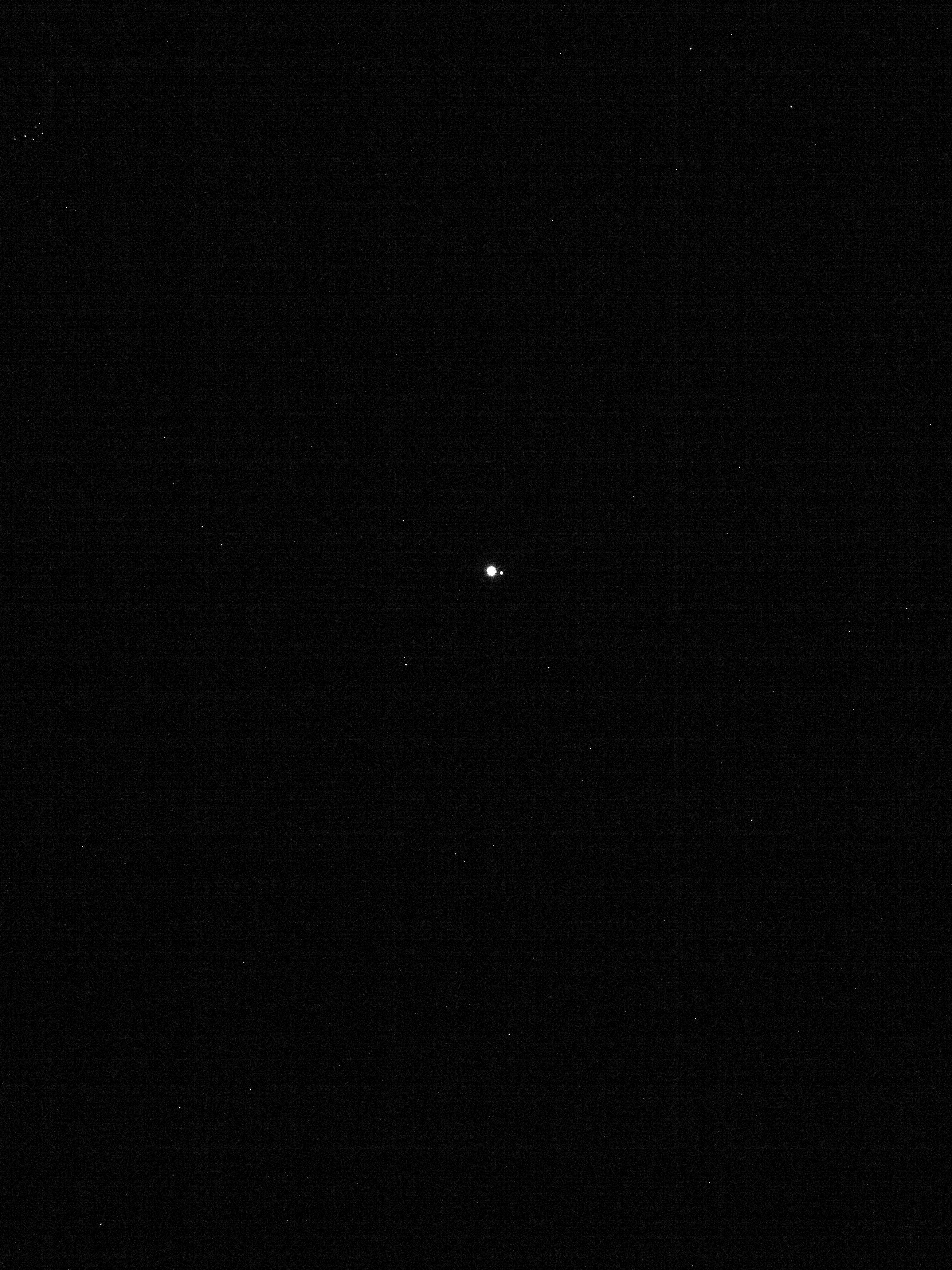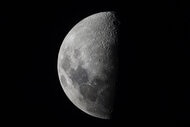Create a free profile to get unlimited access to exclusive videos, sweepstakes, and more!
OSIRIS-REx looks home from far, far away

OSIRIS-REx is a spacecraft on its way to an asteroid. The rock in question, called Bennu, has an orbit that's not terribly different from Earth's; it's more elliptical, and gets a bit closer to the Sun than we do and nearly as far out as Mars.
OSIRIS-REx launched on September 8, 2016, and swung by the Earth on September 22, 2017, to pick up a little bit of energy from our planet and change its orbit so that it'll meet up with Bennu in August 2018.
On January 17, 2018, the spacecraft was a little over 63 million kilometers from Earth and moving away from us about 8.5 kilometers per second (fast enough to cross the continental United States in about ten minutes).
On that date it swung one of its navigational cameras (used to determine its position by looking at bright stars and the surface of Bennu once it gets there) to look back from whence it came. What it saw at first glance isn't that remarkable, but when you take a second glance …
Just a couple of bright dots surrounded by dimmer ones, right? Except no: You're in that photo. So am I. So is everyone you know, and everyone who ever lived.
The bright dot is the Earth, and the slightly dimmer one next to it is the Moon.
Yes, our Earth, our Moon. That's us.
I could wax a bit on this, but in all truth no one has done so better than Carl Sagan, in his essay "Reflections on a Mote of Dust," commonly called "Pale Blue Dot." If you haven't read, I urge you to; it's one of the finest passages ever written in the English language (and I would also urge you to read it in comic form by Gavin Aung Than as well).
But I want to present a slightly different take on it. And it starts with an odd confession.
You know how I love images of space, and how they inspire me. And I love images from space of Earth, too … but I've seen enough images by now of the Earth and Moon together from spacecraft that the immediate "hair standing up on the back of my neck" feeling is lessened somewhat. I wouldn't say I'm inured to it, but more just accustomed to it. I love them, don't get me wrong, but they tend not to rock me back on my feet as much as they used to.
For a moment, just a moment, this one didn't either. But then I noticed something about it.
Look at the upper left corner of the shot. See those dots? Those are stars. And not just any stars, but the Pleiades, the Seven Sisters. It's wintertime right now in the Northern Hemisphere, and if you go outside tonight and it's clear you can easily spot the Pleiades high to the southwest. They're so obvious and iconic that they're often mistaken for the Little Dipper.
When I saw that, I got that familiar tingle down my spine. Then I saw the three stars at the upper right and immediately recognized them as the long triangle marking Aries … which meant the lopsided polygon of stars the Earth and Moon are sitting in would be in Cetus, the head of the sea serpent the constellation represents.
And, oh my, that was the moment the hairs on my neck did indeed stand up. I know this part of the sky. I've scanned it with binoculars many times, sometimes looking for the nearby Triangulum galaxy, other times just scanning because, well, because the sky is pretty.
OSIRIS-REx was over 60 million km from Earth when it took this image, looking back at us in pretty much the same way I've stood on that speck of light, that blob, that planet, and looked in the same direction … and seen the same stars.
That, that brought this image home to me. Literally. We look up, we're curious, and we send a piece of ourselves, a proxy, out into the night to see some of these points of light up close so that we may understand them. We spend years designing these probes, building them, launching them, and letting them travel through the black to their destination.
And in reality, in truth and in fact, this is just an extension of our standing outside on a clear night and watching the stars.
I forget that truth sometimes, even looking at images from space telescopes, from robotic probes plying the solar system. It's easy to sit at a computer and forget that what you're seeing is real, it's a place, just as real and substantive as the world beneath your feet.
They see what we see, and we see what they see, because they are us. An extension of us, but us nonetheless. When we send spacecraft into the solar system, we are sending pieces of ourselves.
Sometimes, it takes a grainy, grayscale, speckled image of home to remind me of that.















